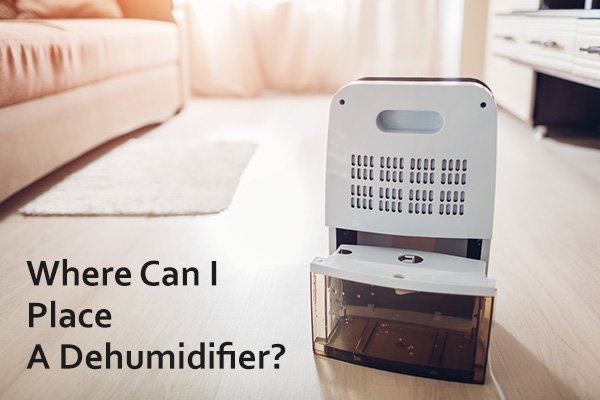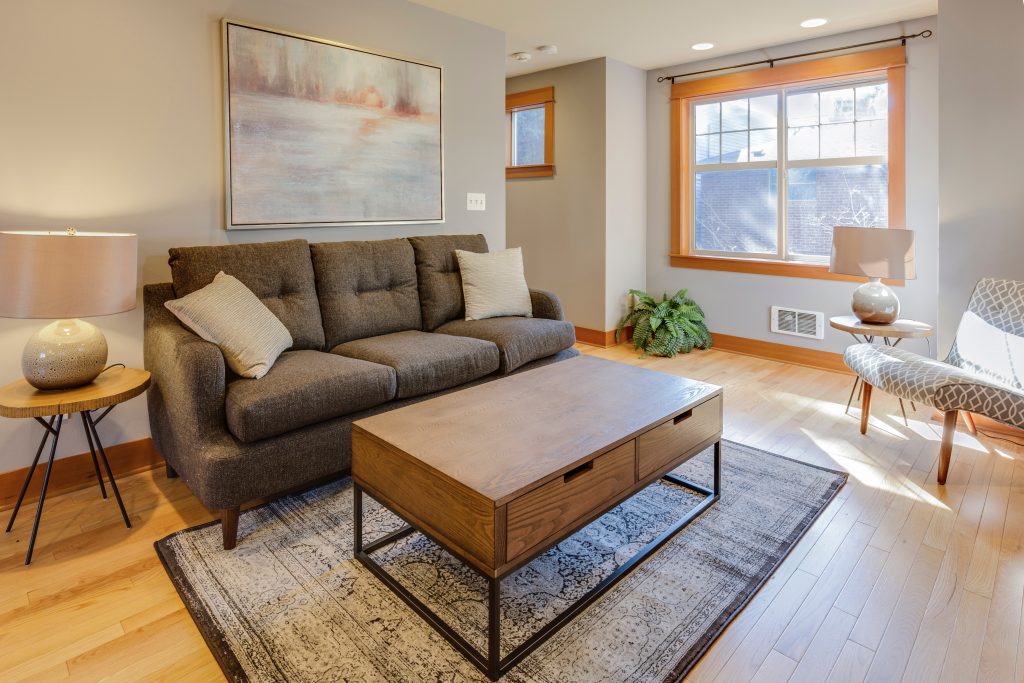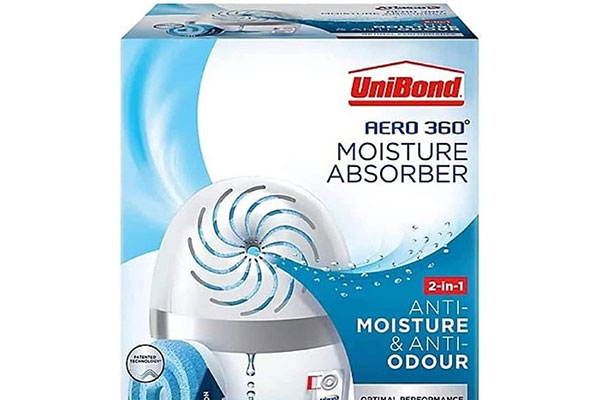A question often asked is where should I place a dehumidifier to get the best results. Many people put a dehumidifier where it is convenient, for example, if they have a little free space against a wall in the kitchen. However, where you place your dehumidifier can significantly affect its efficiency and effectiveness.
It may be easy to unpack your dehumidifier and look around your home for a large enough space to position it. But research shows that dehumidifiers are best placed close to the primary source of moisture if you are trying to combat condensation build-up. So, putting one in the hallway or landing next to your bathroom will help reduce humidity and steam circulation.
It is best to place your dehumidifier close to the primary source of moisture.
For damp rooms with poor air circulation, placing a dehumidifier close to the window will help reduce condensation build-up and mould growth on window panes and walls. But above all, no matter where you place your dehumidifier, it will be most effective when you allow enough air to circulate around the machine.
Make sure air circulation in the room is good so effectiveness of dehumidifier is maximised.
Places to avoid
Using a dehumidifier in your home is a great way to reduce moisture levels in the air. It can be invaluable for thousands of homeowners in Britain who have no choice but to dry their laundry indoors during the winter.
However, dehumidifiers cost money to run. With energy bills on the rise, it makes sense to place your dehumidifier in the most optimal position to minimise your electricity bill and maximise its effectiveness. Suppose you hide your dehumidifier away behind the sofa or another piece of heavy furniture. In that case, it will be less effective at reducing humidity levels yet will consume the same amount of electricity.
Dehumidifiers draw in damp air from the room, condensing the moisture and collecting it in a collection tank, then blowing dry air back into the room. Blocking airflow with heavy furniture will deny it access to damp air hanging in the air. It will perform better with maximum airflow, stirring up the room’s damp air and drawing it into the machine.
Things to consider for dehumidifier placement
While you may have little choice over where you place your dehumidifier if space comes at a premium in your house, there are still things to consider when choosing an optimal spot for your machine. These include:
- Place near moisture source: If you have a problem with condensation and damp patches in the bathroom, it would make sense to place your dehumidifier in the bathroom to quickly remove moisture from the air from bathing and showering. However, consider your safety because dehumidifiers are not waterproof. It must be placed a reasonable distance from your shower, bath or wash to avoid water splashes. Putting your dehumidifier on the landing outside the bathroom door would be a sensible move if you have a small bathroom.
- Kitchen placement: If you are a passionate cook and spend a lot of time cooking up a storm in the kitchen, then placing a dehumidifier in the kitchen will keep steam and humidity in check from lots of simmering pans, steamed vegetables and boiling kettles. Placing a dehumidifier in the kitchen is also ideal if you have an open-plan layout. It will prevent cooking vapour and smells from circulating other living spaces, making soft furnishings feel damp.
- North-facing rooms: In many British homes, it can be common for north-facing rooms to feel damp as they get the least sun and tend to stay cooler all year round. Poor air circulation can be an issue in north-facing rooms, especially during the winter when doors and windows are kept closed to retain heat. Window condensation and mildew can be a problem in these rooms, making clothing, bedding, and soft furnishings feel damp and smell musty. A dehumidifier placed here can help eliminate these issues and keep clothes and fabrics dry and smelling fresh.
- Drying laundry: Many dehumidifier models come with a ‘laundry’ setting specifically designed to help dry laundry indoors when it is too cold or wet to hang out your washing outdoors. For homes that don’t have the space for a tumble dryer, drying laundry indoors is sometimes their only option. However, it can take a long time to dry laundry indoors during the winter, creating a lot of moisture in the air. A dehumidifier can speed up the drying process and decrease humidity levels in the room you use to dry your laundry.
Why air circulation is important
The get the best performance out of your dehumidifier, you should allow enough space around the machine for good airflow. Having good air circulation is critical for a dehumidifier to operate efficiently. While you may not want your dehumidifier to be on full display, hiding it away behind furniture or pushing it into a corner to be less intrusive isn’t the best idea.
Ideally, it would help if you didn’t place your dehumidifier up against a wall or in a corner because your machine needs a good 30cm of space around it – and larger dehumidifier models will need more room for maximum efficiency. It is also not a good idea to hide your dehumidifier behind long curtains or placed against furniture, as this will reduce airflow to your machine.
If you have a lot of furniture in your home, or large pieces of furniture that take up a lot of room, you may be tempted to get a smaller, more streamlined dehumidifier model simply because you lack the space to fit it in. However, while most dehumidifier models can quickly reduce the humidity levels in small rooms no matter where they are placed, don’t be tempted to get a model that is too small for your room simply because it will fit a small space you have available.
A small dehumidifier will struggle to cope in a large room full of furniture, so it would be better to get a size of model that is suitable for your home but position it in the hallway. Make sure you choose a dehumidifier with a large extraction capacity and water collection tank to be more effective for a larger floor space and won’t need to be emptied so frequently.

Pro Breeze 1000ml Dehumidifier
- Removes 450ml of moisture per day
- 1000ml tank
- 4-Hour Timer, Auto Shut-Off, LED Light
- Energy efficient
Where should a dehumidifier be placed in a hallway?
When placing a dehumidifier in a hallway, consider the following factors to ensure the most efficient operation and effectiveness in removing excess moisture from the air:
1. Central Location:
- Place the dehumidifier in a central location within the hallway for it to effectively reduce humidity levels throughout the space. A central position allows for equal distribution and access to air from all parts of the hallway.
2. Near the Source of Moisture:
- If the hallway is near a specific source of moisture, such as a bathroom or laundry room, position the dehumidifier closer to these areas.
3. Airflow:
- Ensure that the dehumidifier is placed in a location with good airflow. Avoid corners where air cannot circulate freely. The dehumidifier works by pulling in air, removing moisture, and releasing dry air, so ample space around the unit is essential.
4. Away from Obstructions:
- Keep the dehumidifier away from large furniture, curtains, or other obstructions that can restrict airflow in and out of the unit.
5. Accessibility:
- Place the dehumidifier where it’s easily accessible for maintenance tasks such as emptying the water reservoir, cleaning filters, and checking operation status.
6. Electrical Safety:
- Ensure the dehumidifier is near a suitable power source, and avoid using extension cords if possible. Place it where the cord does not become a tripping hazard in the hallway.
7. Size of the Dehumidifier:
- Ensure the dehumidifier is appropriate for the size of the hallway. A unit that’s too small may not effectively reduce humidity, while a too-large unit may consume unnecessary energy.
8. Noise Levels:
- If noise is a concern, consider placing the dehumidifier in a part of the hallway where it will cause the least disturbance, especially if the hallway is near bedrooms or quiet areas.
By considering these factors, you can determine the most effective and efficient placement of a dehumidifier in a hallway. Proper placement will aid the dehumidifier in working optimally to maintain a comfortable and healthy environment in your home.
Does a dehumidifier work better upstairs or downstairs?
The effectiveness of a dehumidifier in either an upstairs or downstairs setting depends on various factors including the layout and design of your home, and where the excess moisture is predominantly located. Here are some considerations to help you decide where to place a dehumidifier in your home:
Upstairs Placement:
Advantages:
- Bedrooms and Bathrooms:
- If the upstairs area contains bedrooms and bathrooms, these areas can generate moisture (from showers, for example). A dehumidifier can help keep these spaces comfortable and prevent mold and mildew growth.
- Limited Airflow:
- Upstairs areas often have limited airflow, and a dehumidifier can help improve the air quality in these spaces.
Disadvantages:
- Heat Rises:
- As heat rises, upstairs areas may be warmer, potentially requiring the dehumidifier to work harder to remove moisture.
- Noise:
- Dehumidifiers can be noisy, which might be disruptive if placed near bedrooms.
Downstairs Placement:
Advantages:
- High Moisture Areas:
- Basements and lower levels of homes tend to be more prone to excess moisture and humidity, making a dehumidifier more necessary in these areas.
- Cooler Temperatures:
- Downstairs areas, especially basements, are often cooler, and a dehumidifier may operate more efficiently in these conditions.
Disadvantages:
- Limited Reach:
- A dehumidifier placed downstairs may not effectively reduce humidity on upper floors.
Considerations for Placement:
- Source of Humidity:
- Place the dehumidifier close to the source of humidity (bathrooms, laundry rooms, basements) for the most effective dehumidification.
- Size and Capability of the Dehumidifier:
- Make sure the dehumidifier is adequate for the space. A small unit may not be effective in a large downstairs area, and vice versa.
- Air Circulation:
- Ensure the dehumidifier is placed in an area with good air circulation, and avoid confined or obstructed spaces.
- Multi-level Dehumidification:
- For homes with significant humidity issues on multiple levels, consider using more than one dehumidifier or a whole-house dehumidification system.
In conclusion, whether a dehumidifier works better upstairs or downstairs depends on the specific conditions and needs of your home. Evaluate the areas where excess moisture is a problem and consider the above factors to determine the best placement for your dehumidifier.
Conclusion
While placing a dehumidifier anywhere in your home is better than not having one, choosing the right size model and finding an optimal position for it will allow you to get the most from your machine.
For a small house, a single dehumidifier in the hall will help reduce humidity levels in all of your rooms. Placing a dehumidifier close to the primary source of moisture and humidity will be a better idea for larger homes. You can even use one dehumidifier for the home and place a mini-dehumidifier inside a wardrobe where dampness and mildew are an issue.
Last update on 2025-02-28 / Affiliate links / Images from Amazon Product Advertising API







